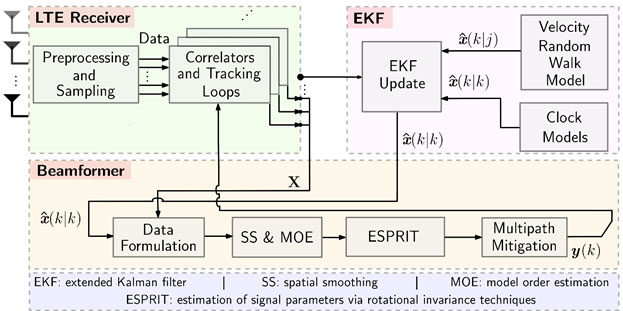Hear from the winners: 5-Minute Video Clip Contest at IEEE ICASSP 2020

The 5-Minute Video Clip Contest, called the 5-MICC, is an annual competition at the IEEE ICASSP and ICIP conferences. The competition aims to encourage the signal processing community to explain concepts in an innovative way using a video. The participating teams must be composed of a supervisor, at most one graduate student and 3-5 undergraduate students. The contest had three stages. The first stage of the contest required submitting a two page writeup on the content and a 30 second trailer. The judging panel selects the top ten teams in the first stage and these teams get a chance to submit their five minute video in the second stage. The panel then shortlists the top three teams based on the five minute video. These teams advance to the final stage where the result is based on another round of judging and audience poll. Teams that secure the first, second, and third spot win a prize money of $5000, $2500, and $1500.
The Winner: A team of five people from the Autonomous Systems Perception, Intelligence, & Navigation Laboratory (ASPIN lab) at The University of California Irvine won the ICASSP 5-MICC 2020. This team was supervised by Prof. Zak Kassas and was tutored by Ali Abdallah. Undergraduate students Zainab Ashai, Xinyi Zhong and Qitai Meng participated in this project.

You can find their five minute video here. Find out what Abdallah has to say about his video and the contest.
Q1. Your five minute video looks great. What was the motivation to choose indoor localization for this video contest?
Answer: Thank you Dr. Myers. I am glad our video was well received by the judging panel and voters from the public. The indoor localization problem has been a research topic for the past several decades. Unlike outdoor localization, which is mostly monopolized by global navigation satellite system (GNSS) technology, no single technology has emerged as a clear winner in solving this pressing problem. With people spending the majority of their time indoors, solving the indoor localization problem will improve public safety, reduce the time lost in navigating through large indoor structures, and bring new capabilities beyond our foreseeable imagination. I have been working on this problem since I started my Doctoral studies at the Autonomous Systems Perception, Intelligence, & Navigation (ASPIN) Laboratory, under the supervision of Prof. Zak Kassas. Our goal is to provide an infrastructure-free, practical, affordable, and accurate indoor localization system that enhances safety and saves time and effort. Cellular long-term evolution (LTE) signals possess numerous desirable characteristics that meet this goal; however, they suffer from multipath, which introduces unacceptably large localization errors. Here comes the power of beamforming, which when properly exploited, reduces the multipath-induced localization errors, providing surprisingly accurate localization without the need for additional expensive and bulky sensors.
Q2. Can you provide an overview of your indoor localization solution?
Answer: At the ASPIN Laboratory, we developed a state-of-the-art LTE navigation software defined receiver (SDR), which has achieved the most accurate navigation results to-date in outdoor environments: meter-level and sub-meter level accuracy on ground vehicles and aerial vehicles, respectively. However, the performance of this SDR indoors degrades due to the effect of short-delay multipath. Our video presented our approach to address this challenge by exploiting beamforming. We developed a synthetic aperture-based beamforming approach to mitigate multipath signals, which differentiates between multipath and line-of-sight (LOS) signals through the signals’ direction of arrival (DOA). To replace the need for a large aperture or multiple antenna elements (which is required by the beamforming process), we exploited the motion of the antenna to capture signals from a moving single-element antenna at different instances. The measurements are taken at different time instants corresponding to different antenna positions. The measurements are combined and processed as if they were obtained from an antenna with multiple spatially distributed elements to beamform received signals towards the LOS path and minimize the effect of multipath; thus, producing more accurate navigation observables. The figure below depicts our developed approach.

In general, the ASPIN Laboratory develops theory, algorithms, and tools for autonomous cyber-physical systems (CPS) deployed in minimally known, dynamic stochastic environments to optimally gather sufficient, trustworthy information to successfully accomplish their mission. The Laboratory’s CPS platforms are multimodal, spanning marine vehicles (underwater and surface), pedestrian and indoor robotics, ground vehicles, and aerial vehicles. Another focus of ASPIN is to enable resilient, accurate, and trustworthy positioning, navigation, and timing (PNT) in environments where GNSS signals are challenged or denied, e.g., indoors, deep urban canyons, and environments under malicious cyber attacks (e.g., intentional jamming or spoofing). To this end, for the past several years, ASPIN has been developing a state-of-the-art SDR that we call MATRIX: Multichannel Adaptive Transceiver Information eXtractor. MATRIX exploits ambient signals in the environment, which are not intended for PNT, e.g., cellular (e.g., CDMA, LTE, 5G), WiFi, and satellite communication (e.g., Iridium, Orbcomm, and Globalstar low Earth satellites). MATRIX is capable of running autonomously in both standalone and collaborative fashions and has been fused with external sensors (inertial measurement units, lidar, etc.).
Q3. Using LTE signals for localization is really a cool idea. Can you discuss how you got undergraduates started on this project?
Answer: I am glad you brought this up. Involved projects, such as ours, require the effort of an entire team to make it happen. The “healthy mix,” as I like to call it, of having undergraduates, graduates, and post-graduates working together brings different perspectives and strengths. In this particular project, each of the participating undergraduate students contributed based on his/her background. For example, Zainab worked on mapping the LTE towers in the environment where the experiment was conducted (our campus). On the other hand, Xinyi (Taylor) and Qitai (Neo), with their mechanical engineering background, worked on making the proposed system more portable by designing a miniaturized backpack to hold the different parts of the system. These valuable efforts, along with the proper supervision from Prof. Kassas, is what stands behind this win.
Q4. That’s a great team effort. Finally, we would be happy to hear about the audio and video editing softwares your team use for this video project. These tools may be useful to the readers participating in the upcoming contest.
Answer: Participating in this competition was a chance for us to learn more about audio and video editing. This video was produced in the ASPIN Laboratory by utilizing different software: Microsoft PowerPoint, MATLAB, Google Earth, and Adobe Premiere Pro. I would like to thank my lab colleagues: Joe Khalife for his invaluable help and Trier Mortlock for narrating the video.
Interested to participate in an upcoming 5-MICCs? Check out the 5-MICC from ICIP 2020. The topic for this contest is “Image and video processing tools for fighting the coronavirus (COVID-19) pandemic”. Good luck for the upcoming 5-MICCs! Please follow the IEEE SPS on twitter https://twitter.com/IEEEsps for more updates and click here to subscribe to the youtube channel.

